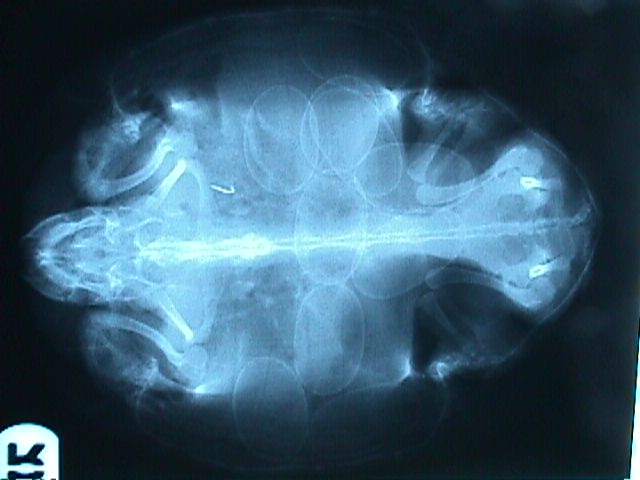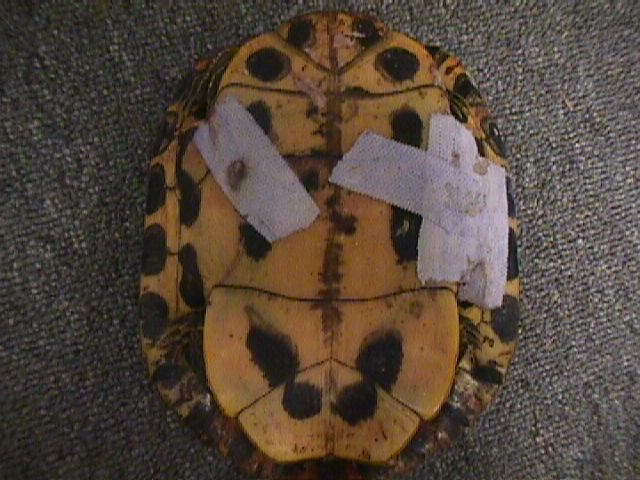Why did the turtle cross the road? (rehab techniques/cases/stories)
3 toed box turtle case (click to go to recent case-6-24-00)
The 45 pound endangered turtle story (6-28-00)
Every spring, the age old question of "Why did the turtle cross the road (and get creamed by the car/truck)?" gets asked as concerned good Samaritans bring the animals to rehabilitation facilities, private veterinarians, and zoos around the country. In the case of aquatic turtles such as some of the animals shown below, the answer is almost invariably "to lay her eggs".
 |
Hit by car adult female RES with a fractured mandible and maxilla, fishhook (incidental finding), and numerous ova. |
 |
Another adult female slider with multiple fractures of the plastron and carapace and numerous ova in her coelom.
|
One of the most effective temporary measures I have found for fractures of the carapace or plastron involves two easy to obtain materials: one inch surgical tape and tissue glue (tissue glue is essentially medical grade super glue).
After cleaning the shell of algae and debris from around the area of the fracture (I use a mild detergeant then finish with alcohol to prepare the surface for the tape application) I simply apply an appropriately sized piece of tape and then apply a large amount of tissue glue to the tape itself. The "pseudocast" firms in about 5 minutes and gives stability to an otherwise unstable area. I have found that this "quick fix" solution easily lasts several days which allows time to get together the materials for a more permanent solution (whether it be methylmethacrylate or fiberglass epoxy- will go into these more at a later date).
 |
A simple and quick temporary solution for carapace or plastron fractures in turtles.
|